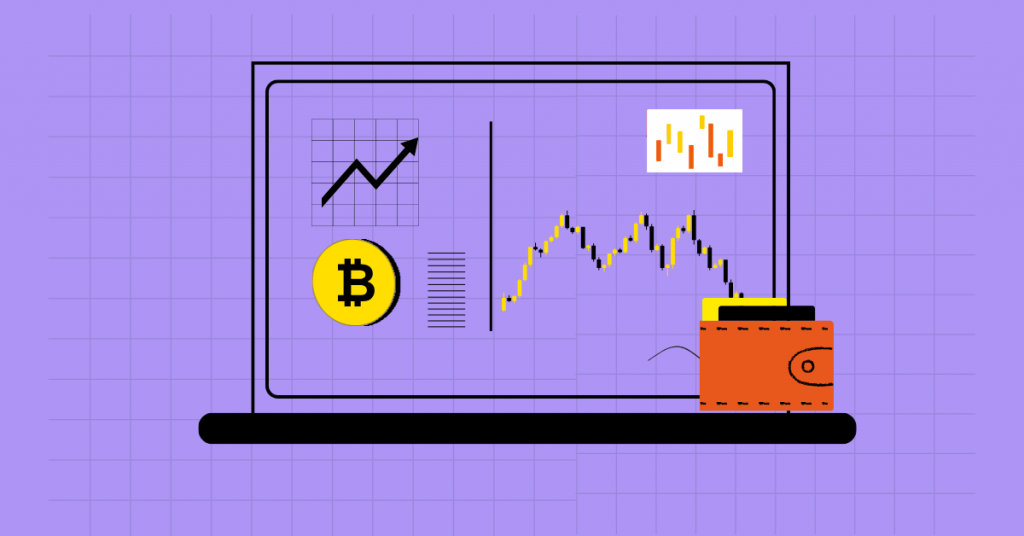Bitcoin, as the flagship cryptocurrency, has become a focal point for investors and traders worldwide. Its price dynamics are often subject to significant fluctuations, driven by various market forces and investor sentiment. Among the key phenomena observed in Bitcoin trading is the “breakout,” a critical concept for anyone looking to understand or capitalize on Bitcoin’s price movements. This article provides a comprehensive overview of what a Bitcoin breakout is, how it occurs, and its implications for market participants.
What Is a Bitcoin Breakout?
A Bitcoin breakout refers to a situation where Bitcoin’s price moves beyond a previously established support or resistance level, leading to a significant and often rapid price change. Essentially, a breakout occurs when the price “breaks out” of a defined range or pattern, signaling a potential new trend or a continuation of an existing one. This concept is crucial for traders and investors as it can indicate a shift in market dynamics and provide trading opportunities.
Types of Bitcoin Breakouts

1. Bullish Breakout
A bullish breakout happens when Bitcoin’s price moves above a resistance level, indicating a potential upward trend. This type of breakout suggests that the buying pressure has overcome the selling pressure, leading to a new high. Bullish breakouts often occur after a period of consolidation, where the price has been trading within a narrow range. When the price breaks above this range, it can signal a strong upward movement.
2. Bearish Breakout
Conversely, a bearish breakout occurs when Bitcoin’s price falls below a support level, suggesting a potential downward trend. This breakout indicates that the selling pressure has surpassed the buying pressure, leading to a new low. Bearish breakouts also typically follow a period of consolidation, where the price has been trading within a specific range before breaking downward.
How Bitcoin Breakouts Occur
1. Technical Analysis
Technical analysis is a key tool in identifying and predicting Bitcoin breakouts. Traders use various technical indicators and chart patterns to analyze potential breakout points:
- Chart Patterns: Patterns such as triangles, flags, and pennants can signal potential breakouts. For example, a symmetrical triangle pattern might indicate that Bitcoin’s price is consolidating before a breakout occurs.
- Moving Averages: Moving averages, such as the 50-day and 200-day moving averages, can help identify potential breakout levels. A crossover of moving averages might signal a breakout.
- Volume: Increased trading volume during a breakout can confirm the strength of the movement. Higher volume often indicates strong market interest and can validate the breakout.
2. Market News and Events
Significant news events and macroeconomic factors can trigger Bitcoin breakouts. Positive news, such as institutional adoption or regulatory approval, can drive a bullish breakout. Conversely, negative news, such as regulatory crackdowns or macroeconomic uncertainties, can lead to a bearish breakout. Monitoring news and events is crucial for understanding the context behind a breakout.
3. Market Sentiment
Market sentiment, or the overall mood of market participants, can influence Bitcoin breakouts. Sentiment shifts can lead to sudden changes in buying or selling pressure, resulting in breakouts. For example, a surge in positive sentiment might drive a bullish breakout, while negative sentiment might lead to a bearish breakout.
Analyzing Bitcoin Breakouts

1. Pre-Breakout Analysis
Before a breakout occurs, traders often analyze price patterns and technical indicators to identify potential breakout points. Key factors to consider include:
- Resistance and Support Levels: Identifying key resistance and support levels helps determine potential breakout points. Resistance levels are price points where selling pressure has previously emerged, while support levels are where buying pressure has emerged.
- Consolidation Patterns: Observing consolidation patterns, where Bitcoin’s price trades within a narrow range, can provide insights into potential breakout directions.
2. Post-Breakout Confirmation
After a breakout, it is essential to confirm the validity of the movement. Key factors to consider include:
- Volume: High trading volume during a breakout can confirm the strength of the movement. Lower volume might indicate a false breakout or lack of conviction.
- Price Action: Analyzing the price action following a breakout helps assess whether the new trend is likely to continue or if the breakout might reverse.
Implications for Traders and Investors
1. Trading Strategies
Understanding Bitcoin breakouts is crucial for developing effective trading strategies. Traders often use breakout strategies to enter positions, set stop-loss orders, and take profits. For example, a trader might enter a long position following a bullish breakout and set a stop-loss order below the breakout level to manage risk.
2. Risk Management

Breakouts can be volatile, leading to significant price swings. Effective risk management is essential for protecting capital during breakout scenarios. Traders should set stop-loss orders, use proper position sizing, and avoid over-leveraging to manage risk effectively.
3. Investment Decisions
For long-term investors, understanding breakouts can provide insights into broader market trends. Identifying key breakout points can help investors make informed decisions about entry and exit points. Additionally, understanding the context of a breakout, such as underlying news or macroeconomic factors, can guide investment strategies.
A Bitcoin breakout represents a critical moment in the cryptocurrency’s price movement, indicating a shift beyond established support or resistance levels. Understanding what a Bitcoin breakout is, how it occurs, and its implications is essential for traders and investors looking to navigate Bitcoin’s volatile market effectively. By analyzing technical indicators, monitoring market news and sentiment, and employing sound trading strategies, market participants can capitalize on breakout opportunities and manage associated risks.
As Bitcoin continues to evolve and its market dynamics shift, the concept of breakouts will remain a fundamental aspect of trading and investment strategies. Whether you’re a trader seeking to exploit short-term movements or an investor aiming to understand long-term trends, grasping the nuances of Bitcoin breakouts is key to making informed decisions in the cryptocurrency market.
